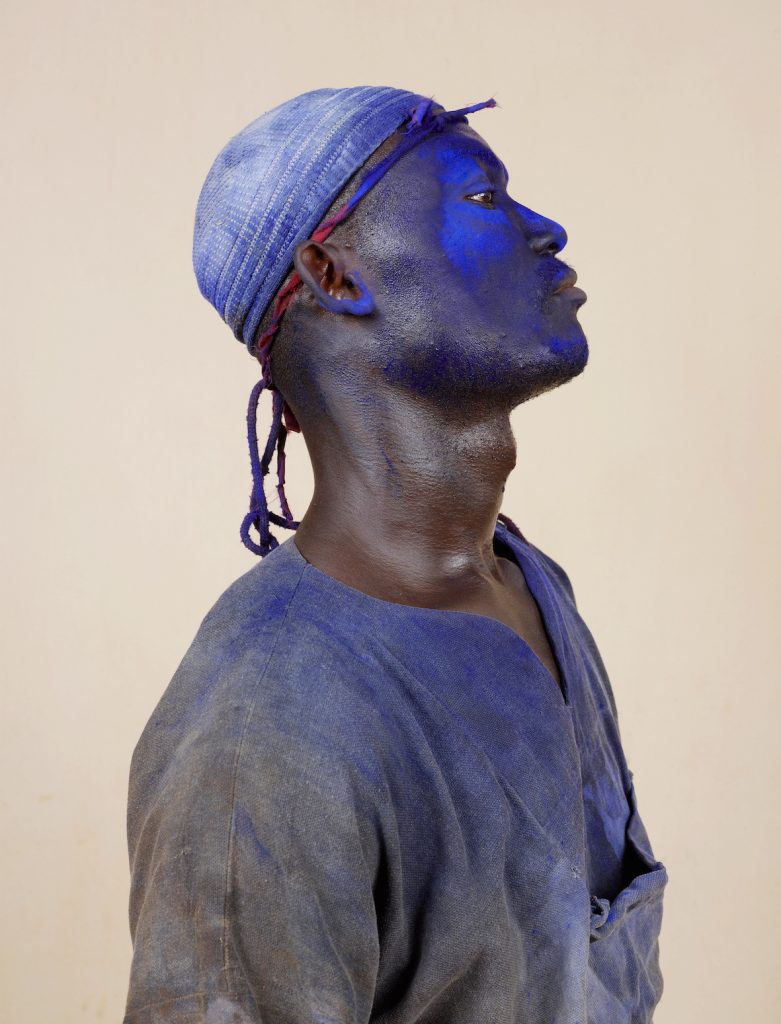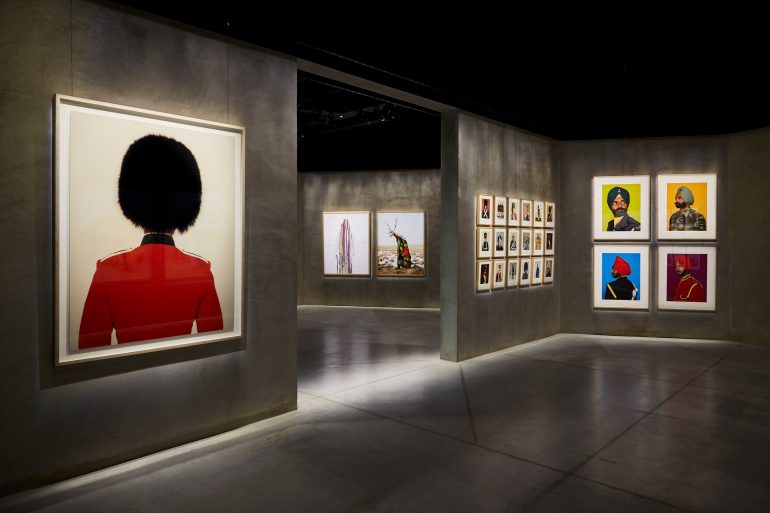by Rica Cerbarano
_
Halfway between anthropological research and artistic production, the work of Charles Fréger questions the concept of cultural identity through the individuals who compose the community, the dress codes they adopt and the gestures of their rituals.
Armani/Silos dedicates a great retrospective to this great contemporary author: Fabula, which, through more than 250 works, shows the evolution of his special cataloguing activity. Collected for a long time under the generic title Portraits Photographiques et Uniformes, his work began in 1999 with the first series dedicated to young teenagers in search of their own identity to then flow into a wider range of interest towards the mythological representation of costumes, masks and rituals.
The exhibition focuses on the last phase of his work and the theatrical component in it, which, room by room, is increasingly present: it is not only the type of group portrayed to evolve, but also the way Fréger himself photographs, which, over the years, has moved from a certain Nordic tradition to a spectacular, almost dreamlike dimension.
The selection on display includes portraits of the Finnish ice-skating team (Steps), images of young Sumo (Rikishi) wrestlers and European armies and their dress uniforms (Empire), photos of Sikh soldiers (Sikh Regiment of India) and the elephants of Jaipur (Painted Elephants), up to the salient series of Wilder Mann and Yokainoshima, dedicated to traditional masks in a rural context. Each community has its own code, but the guiding principle behind the impulse to express belonging through clothing – non-verbal communication medium par excellence – is somewhat common.
Whether it is the white cap of the swimmer or the ritual masks worn in Europe, Japan, Central and South America, Fréger’s work, which expresses the individual’s need to belong to a community by shooting the form that this need takes on the outside, gives an iconographic documentation of communities around the world. And it is also very autobiographical, more than one might think.

Having followed the work of Charles Fréger for a long time and loving it so much, I took the opportunity to interview him.
When did you start to photograph?
I was studying at the Rouen School of Art to become a painter, but I was also very interested in semiology and the study of images. This interest brought me very quickly to make some photographs myself and I immediately started taking portraits. My pictorial production was very serial, I was fascinated by pop art and I really liked the concept of seriality and repetition, and so I think I immediately understood, from the beginning, that I wanted to create a photographic series and not to think about a single image. Moving from portraits to uniforms was practically immediate, I always thought of these two elements as complementary.
How has your production changed over the years?
When I started photographing I was 23, I was still young enough to have a direct contact with the teenagers I was photographing. Through my photographs, I reflected on the construction of the identity of the children who learn to be part of the community: so I shot mainly in schools, in sports clubs, in any kind of academy and so on. I was very interested in the relation between individual and collective identity. Step by step, the way I photographed has changed. With the series Empire I started to photograph some of the guards from the back and suddenly I realized that the issue of identity was going into the background: the dress they wore had become the subject of my photographs.
In 2004-2007 I worked with the Chinese Opera, where the boys had to put on make-up and dress up to get into the shoes of their character, and so I started thinking about the possibility of transforming one’s identity assuming the role of a fictitious character. From there, the step towards the masks was short. The first series in which I portrayed them was Wilder Mann, but in reality they were behind all my work for a long time.
Now I no longer analyze individual identity in the collective sphere, but more the strong cultural identity of some groups. This change is visible in the exhibition.
Thanks to the architecture of the Silos, the exhibition itinerary recalls that of a circle. It starts and ends with Water-Polo, one of the first series you’ve made. But the shape of the circle is also present in some of your works and has a precise meaning, isn’t it?
The element of the circle and its importance began with the Rikishi series, where I portrayed the sumo wrestlers. On that occasion, my goal was to shoot the portraits inside the perimeter dedicated to the fight and I negotiated a lot for this to happen. Entering this sacred circle, forbidden to women and reserved exclusively for wrestlers, meant for me to enter into the dynamics of the community, to be accepted somehow, even with the awareness of being completely an outsider. Photographing a foreign community also means questioning your own identity, asking yourself who you are as an individual, and this also leads you to feel like a stranger.
When I look at your photographs I am as overwhelmed by the thought that behind a single shot there is a huge work of research and organisation. The result is so simple, yet every image is the result of a precise methodology.
Exactly. Most of my work is done before the moment I shoot. First of all, I have to find people, locate them, understand what they do and instinctively know if the group has a connection with me. Some people sometimes write to me “Hey, I know this community… it could be interesting for you!”—most of the time it is not. This happens because I reflect myself in the group that I photograph, because I feel that it is connected with me. Often it’s as if I already had the idea of what I want to do and what I’m going to produce, it’s all about finding it.
Some projects require months, other years of design, and for this very often I work on several projects at the same time (the realization of a project like Yokainoshima took three years) People think I’m always beating the road, but I am always in front of my computer. The logistic aspect is as important as the moment of shooting. Also, when I get there, it’s not just about snapping and go. I’m using a medium-format camera, the flash and the tripod, so there’s really a lot of preparation for the shot. We must always be very organized.
Browsing on your website, I have seen that some of the latest projects represents silhouettes: no more outfits and costumes, only shadows. This is was surprising.
Well, you know when I told you that the groups have a mythology: the silhouette speaks exactly of that mythology. When I work with the silhouettes, I photograph the group’s bones. I photograph what is the story behind and how mythology is part of our culture. For La Suite Basque, the first project with silhouettes, I had to photograph dancers, actors, people taking part in a show, and so I felt that photographing them through the silhouette would be a way to directly represent the mythology that they are constantly trying to put on stage.
I consider La Suite Basque as part of a trilogy on French culture. The first chapter was Bretonnes, then I did La Suite Basque and now I have been doing a project on Alsace since last year, questioning the cultural identity of the population between France and Germany. Also in this case, I’m making the most of the project in the form of silhouettes.
The exhibition catalog, distributed free of charge, is designed as an album of Panini stickers. I was excited when I saw him.
The album of stickers is something that is part of the mythology of all of us. I was sure everybody would like it.
The exhibition:
CHARLES FREGER | FABULA
Armani/Silos
via Bergognone 40, Milano
January 12th – March 24th, 2019
February 5, 2019




